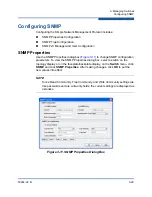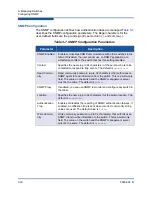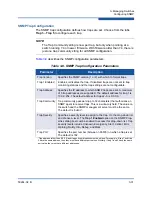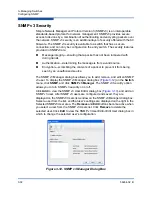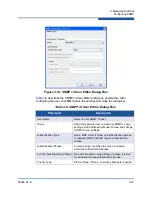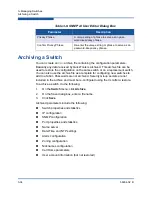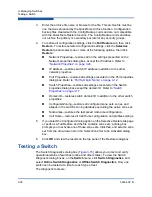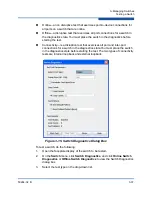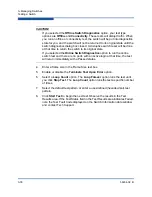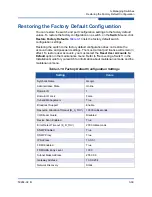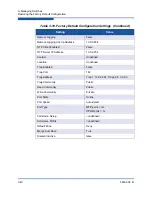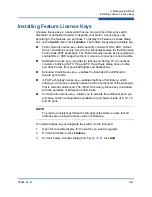
3–Managing Switches
Configuring SNMP
59264-02 B
3-31
SNMP Trap Configuration
The SNMP trap configuration defines how traps are set. Choose from the tabs
Trap1
—
Trap 5
to configure each trap.
describes the SNMP configuration parameters.
NOTE:
The Trap Community string is now per trap, but only when pointing at a
switch running 7.4 or newer firmware. With firmware older than 7.4, there is
just one trap community string for all SNMP configuration.
Table 3-8. SNMP Trap Configuration Parameters
Parameter
Description
Trap Version
Specifies the SNMP version (1 or 2) with which to format traps.
Trap 1 Enabled
Enables or disables the trap. If disabled, traps are not sent to trap
monitoring stations and the trap settings are not configurable.
Trap Address
1
1
Trap address (other than 0.0.0.0) and trap port combinations must be unique. For example, if trap 1 and trap
2 have the same address, then they must have different port values. Similarly, if trap 1 and 2 have the same
port value, they must have different addresses.
Specifies the IP address to which SNMP traps are sent. A maximum
of 5 trap addresses are supported. The default address for trap 1 is
10.0.0.254. The default address for traps 2–5 is 0.0.0.0.
Trap Community
Trap community password (up to 32 characters) that authorizes an
SNMP agent to receive traps. This is a write-only field. The value on
the switch and the SNMP management server must be the same.
The default is “public”.
Trap Severity
Specifies a severity level to assign to the trap. On the drop-down list
and choose a level. The
Trap 1 Enabled
option on the SNMP Prop-
erties dialog box must be enabled to access this drop-down list. Trap
severity levels include Unknown, Emergency, Alert, Critical, Error,
Warning, Notify, Info, Debug, and Mark
Trap Port
1
Specifies the port number (between 1-65535) on which a trap is set.
The default is 162.













